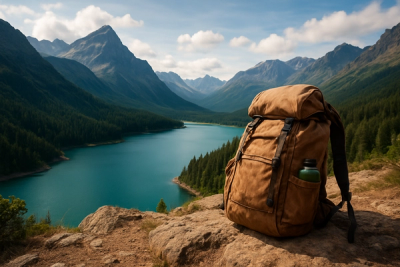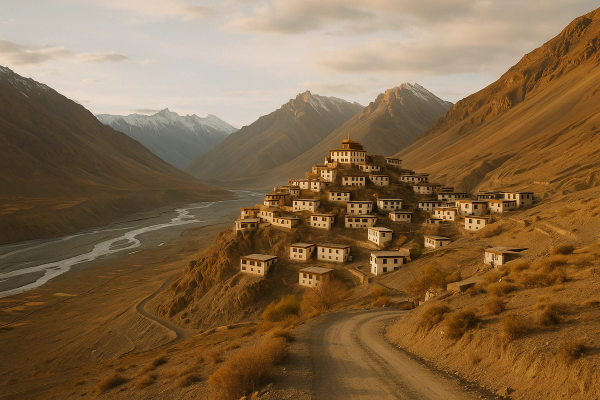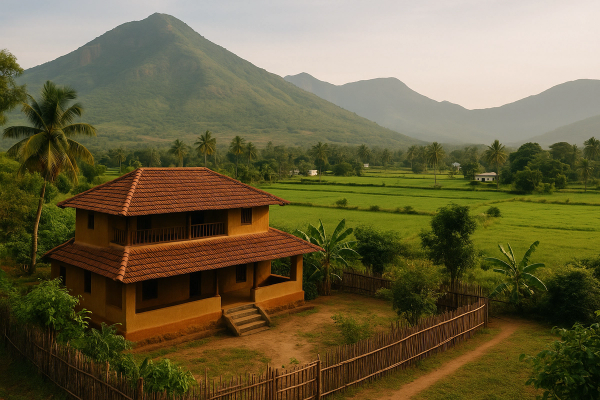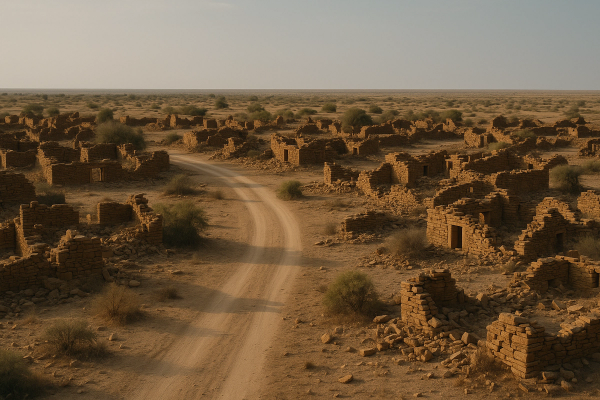Top Indian Watersports Destinations for 2025 — the messy, salty, oh-wow version I actually lived#
So, um, 2025 kinda became my accidental year of chasing water. Like, full on. I kept telling myself I’d slow down and then… Goa, Andamans, Rishikesh, Mulki, Lakshadweep, Tarkarli. My backpack never dried. My hair just gave up. But man, the sea, the rivers, the whole scene in India right now for watersports is buzzing like crazy. Some places have gotten pricier and busier, sure, but also safer and honestly more pro than what I saw a few years back. And I made mistakes. A lot. Forgot reef-safe sunscreen once and the dive instructor gave me a talking-to like he was my disappointed uncle.¶
Why India is nuts-good for watersports in 2025#
Couple big things. One, operators have really leveled up — more PADI/SSI certified dive shops, better helmets and life jackets for rafting, proper tow ropes for parasailing, the whole works. Two, a bunch of destinations are putting numbers caps and seasonal rules to keep folks safe, which means you gotta plan a bit more, but you don’t end up in those chaotic free-for-alls I remember from, idk, 2017-ish. Also trends: sustainable gear, cashless everything (UPI is king, even on beach shacks), and beginners going for try-dives and surf lessons instead of just banana boat chaos. Still fun, just less… unhinged.¶
Goa: chaotic good, when it’s the right season#
I landed in Goa in late October, which is basically when the lifeguards and operators start green-flagging most popular beaches. Baga and Calangute had the usual lineups for parasailing and jet skis, but Candolim and even Ashwem felt a bit calmer. I did a sunrise paddleboard session near Nerul creek — highly underrated, no crowds, just birds and me trying not to wobble like a baby giraffe. Rates in 2025, for what I saw: parasailing around ₹1,200–2,000, jet ski rides ₹500–1,000 short spins, SUP rentals ₹600–1,200 an hour. Beach shacks with clean rooms went from ₹1,800–3,500 a night, midrange hotels ₹5k–9k, and if you want fancy beachside, you’re def crossing ₹12–20k in season. Just note, June to September the sea gets rough and the state will usually pause or limit watersports — I got turned back one windy afternoon even in October when a sudden squall kicked up. Safety guys were strict, which I weirdly loved.¶
Havelock and Neil, Andaman & Nicobar: the water I still dream about#
I blew a chunk of my budget here and zero regrets. Havelock — it’s Swaraj Dweep now — has those calm blue gradients you see on postcards and think are fake. I dove with a small crew near Jackson’s and Aquarium sites. Clear, 20–25 meter visibility on good days, and a shy turtle who looked personally offended by my existence. If you’re new, a try dive is like ₹4,000–6,000. Open Water course is usually ₹23–35k, depending how many boat dives and materials they include. Most shops were insisting on reef-safe sunscreen and no glove policies to discourage touching stuff. Respect.¶
Travel bits for 2025 here: no special visa for Andamans if you’re already allowed in India, but do carry ID at all times. A few zones remain restricted for both environmental and tribal protections, and the cops will actually check boats. Season is roughly Oct to May. Monsoon and shoulder months can get choppy, and sometimes ferries get delayed. I got stuck an extra day in Port Blair, ate too many samosas, not the worst fate. Midrange stays on Havelock were ₹6–12k a night, very basic cottages can be ₹2.5–5k, and the beachfront boutique splurges are like ₹15–25k easy in peak. Book ahead — 30–60 days — if you’re going around Christmas–New Year. Oh and Radhanagar Beach is still mind-blowing for sunsets, but not exactly the place for motorsports. Keep it mellow there.¶
Lakshadweep: paradise with paperwork, and totally worth it#
I finally did it. After seeing, like, a million photos on social in early 2024, I locked in a permit and made it to Bangaram and Kavaratti in early 2025. Heads up — permits are still a thing. Whether you’re Indian or a foreign traveler, you need an entry permit, and typically you go through approved tour operators or government-run SPORTS packages. Slots are limited and they really do sell out, more now cause, you know, internet virality. Flights usually via Kochi to Agatti, and occasionally weather loves to ruin everything, so keep a buffer day if you can.¶
Water clarity here is silly. Snorkeling off Bangaram I saw rays and hard coral gardens I legit almost cried. Diving was pricier than mainland — single boat dives around ₹5–7k, beginner packages or discovery dives ₹6–9k. Stays: even the simplest places were from ₹8–12k a night, and resort-y stuff was ₹15–30k+. Also it’s a conservative region, modest clothing in villages, and alcohol is restricted. Some resorts historically had special permissions but don’t bank on it. I kept it coconut water classy and slept like a baby. If you’re the person who likes loud music and nightlife, nah. If you like whispery lagoons and stars that look edited — this is your spot.¶
Mulki and Kovalam: surfing that doesn’t totally punish beginners#
Mulki in coastal Karnataka has turned into the surf school capital. I stayed at a surf hostel by the river and would paddle out at first light when the wind was still sleepy. It’s a warm, gentle kind of surf most days between October and March, great for first timers. Lessons were around ₹1,500–2,500 per session with board rental, and multi-day packages cheaper per day. Kovalam in Kerala — different Kovalam from the surf break near Chennai, just to confuse everyone — had more folks in the water, a bit more touristy, still fun. I faceplanted on a knee-high wave and a kid clapped for me like I’d won a trophy. Fair.¶
Rameswaram and Pamban: kitesurfers’ secret that’s not a secret anymore#
It’s windy. Like, bring-your-smallest-kite windy on certain days. The lagoons around Pamban create these flat water sections that feel custom-made for beginners and freestylers. Schools were doing discovery sessions and full IKO courses. I’m not a big kiter yet — more of a flailing noodle — but even I managed to stay up for a few dreamy runs. Peak months tend to be May–September and again December–March with the wind machines cranking. Expect lesson prices to start ₹5–8k per session, and full beginner courses much higher ofc, like ₹35–60k depending how many hours and gear. Sun here is a menace. Hydrate or evaporate.¶
Rishikesh and the Ganga: rafting with a side of hot chai#
I’ve done this a few times and 2025 felt more organized. Licensed guides, life vests that actually fit, and proper briefings. Post-monsoon to early summer is the sweet spot. Short 9–12 km runs were around ₹800–1,500, longer ones ₹1,800–2,500. Camps are mostly set back from the river now to protect the banks, so you’ll usually get a jeep transfer down to put-in. It gets chilly in the water Jan–Feb, so rent a wetsuit unless you enjoy suffering. Oh, and don’t bring your phone unless it’s in a dry bag clipped to your vest. Learned that the wet way.¶
Tarkarli and Netrani: Maharashtra and Karnataka hold their own#
Tarkarli near Malvan is still a sweet beginner dive and snorkel spot. Shallow reefs, friendly operators, homestays that feed you till you roll to the beach. Try dives around ₹3–5k. It does get crowded on weekends, so go midweek if you can. Off Murudeshwar, Netrani Island diving is more advanced on some days cause of currents, but wow, the fish action. Boats can be a bit of a ride, but the water was properly clear when I went in Feb. Keep an eye on official permissions cause occasionally access rules get tweaked. Bring cash as backup; UPI usually works but not always once you’re out on boats or at tiny stalls.¶
Kerala backwaters and Pondy: kayaking, SUP, and low-key dives#
On days I wanted chill instead of thrills, I’d kayak the backwaters near Alleppey at sunrise. Birds everywhere. Tea stops on tiny jetties. Zero drama. Rentals are like ₹400–800 per hour with guide options. Pondicherry has a surprisingly nice little dive scene. I did a wreck dive with Temple Adventures a couple years back and checked in again north of 2024 — still friendly, still safe, viz depends on the day. Not the Maldives, but a nice fix if you’re around Chennai or Pondy anyway and itching to get wet.¶
Seasons matter. Like, a lot#
- Goa and Maharashtra watersports: mostly Oct to May. Monsoon = limited or paused.
- Andamans: diving and calm seas peak Dec–Mar. Shoulder Oct–Nov and Mar–May can be great.
- Lakshadweep: Oct–May ish. Weather can flip, so build a buffer day.
- Rishikesh rafting: post-monsoon to early summer, pauses during heavy rains.
- Kitesurfing in Rameswaram: best winds May–Sep and Dec–Mar.
If you go off-season, you might save money, but also you might end up eating pakoras in a rain hut for three days. Which honestly isn’t the worst, just not watersports.¶
Visas, permits, and the mildly boring but important 2025 stuff#
For most travelers in 2025, India’s e-Visa system is the move for tourism. Apply online ahead of time, carry the printout or digital copy, and make sure your passport has 6 months validity and blank pages. Not everyone’s eligible for e-Visa, and rules can change for specific nationalities, so double check with official Indian government sites before booking flights. Yellow fever rules still apply if you’re coming from affected countries. Domestic flights are plentiful, but some islands and far spots have limited seats. Lakshadweep needs an entry permit issued in advance through approved operators. Andamans doesn’t need extra permits for the usual tourist islands, but some tribal and restricted areas are completely off-limits. Respect those lines — they exist for reasons.¶
Safety in the water — the unsexy part that keeps you alive#
- Pick licensed operators. Ask about certifications. If they shrug, walk away.
- Life jacket on boats, always. Helmet on rafts, obviously. Don’t be that guy.
- Listen to flags and lifeguards. Red means no swim. Yes even if you’re a “strong swimmer.”
- Reef-safe sunscreen and no-touch dives. Corals aren’t souvenirs.
- Adventure insurance that covers watersports. Costs like a pizza, saves like a vault.
I once almost went out for a sunset parasail in gusty wind cause the sky looked pretty. The pilot said no. I sulked. Then the wind slammed so hard a minute later that our snack table tried to take flight. Point taken.¶
What it all cost me in 2025, roughly, and where I felt it pinch#
Accommodation has inched up. On average, I paid ₹2–4k for basic beach shacks or homestays, ₹6–10k for comfy midrange near the good bits, and ₹15–25k for the rare treat-yourself night. Water activities ranged from ₹500 for a quick jetski to ₹2,000 for parasail, ₹3–6k for try-dives, ₹20–35k for scuba courses, ₹800–2,500 for rafting runs, and ₹1.5–2.5k a surf lesson. Lakshadweep and Andamans were pricier across the board, but also felt more curated and less crowded. Worth it, IMO. Book early for holidays and around festivals cause 2025 calendars were just packed and places sold out weeks ahead.¶
Random moments I can’t stop thinking about#
- Drinking ginger chai after a cold raft splash in Shivpuri and watching the mountains fade into pink. Me and him went quiet for once, just steam and river sounds.
- Falling off a SUP during mangrove silence in Goa, scaring a flock of egrets, apologizing out loud to birds. Yea I’m that person.
- A pod of dolphins slicing past the bow near Agatti, so fast I almost didn’t believe it. The boatman just grinned like it was Tuesday.
- Kicking up sand at Kovalam after a nosedive wipeout and some little kid yelling, “Again!” with both hands in the air.¶
Stuff I wish I knew before I went#
Book ferries and inter-island flights earlier than feels normal. Bring a dry bag and a small first aid kit with motion sickness tabs and rehydration salts — heat got me once. Download offline maps. UPI is everywhere but doesn’t work without signal, and sometimes you’ll be literally in the middle of the sea. And pack a long sleeve rashguard. Sun here doesn’t play nice, and neither do jellyfish on some shoulder-season days. Also, don’t try to do everything in one loop. India’s big. Like, wildly big. I kept forgetting that and then spent half my day in transit. My bad.¶
If you only pick two watersports hubs for 2025 and want them wildly different: do Mulki for the surf community vibe and Lakshadweep for the mind-melt water clarity. You’ll come home different. In a good way.
Would I go back?#
Yes. Tomorrow. Next week. Whatever. I’d do longer in Havelock, finally commit to a full IKO course in Rameswaram, and maybe, just maybe, learn to duck dive without looking like I’m wrestling laundry. India’s waters are complicated, sometimes crowded, sometimes perfect, but they’re also real and full of small kindnesses — a guide tightening your vest, a chai offered after a spill, a stranger pointing you to the safe channel when you drift. That’s the memory that sticks.¶
Final splash#
2025’s India watersports scene is the best I’ve seen it — safer, cleaner in spots, busier in others, but still full of those jaw-drop moments that don’t need filters. Do your homework for permits and seasons, pick operators who care, and be the kind of traveler who leaves places a little better. If you want more messy, honest travel stories and useful bits, I drop stuff over on AllBlogs.in now and then. See you in the water, yeah?¶














